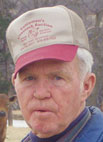 Age is just a number for Honey Reese, 17 of Sallisaw, Okla. Honey may only be a high school senior set to graduate in May, but she’s taking on and accomplishing her dreams.
Age is just a number for Honey Reese, 17 of Sallisaw, Okla. Honey may only be a high school senior set to graduate in May, but she’s taking on and accomplishing her dreams.
One of those dreams comes after two years in the making. When Honey was 15 years old she wrote a children’s story just as a way to help her sister, but much more was to unfold.
“I’ve always written stories for my younger brothers and sister. I wanted to write a story that could teach my little sister to read,” said Honey.
The book was based on two of Honey’s passions – llamas and South American culture. “The book titled, Inti, the Very Helpful Llama, is about a young llama who feels she isn’t helpful to her caretakers,” explained Honey. “So she visits with family members and they show her that she is indeed helpful. Basically, it’s a book about self worth.”
After several people, including Honey’s mom, read the story they encouraged Honey to have the story about INTI the helpful llama published. After overcoming a few financial setbacks Honey’s book has been published and was released on February 11, 2014.
Honey’s fascination with llamas started at a much younger age when her family lived in Alaska. Honey explained, “When I lived in Alaska I was thinking about breeds of livestock that would do well in Alaska. So I did some research and became interested in llamas. That same year we visited an RV park that had llamas and that was it, I knew I wanted to raise them.”
She continued, “When we moved to Oklahoma three and a half years ago I found a breeder near Springfield, Mo., and bought 8 head, one of which was bred. Her baby Sweetie is the llama the book was based on.”
Honey’s herd now consists of two studs and eight girls. Honey has since started showing her llamas and has started a llama group through the Sequoyah County 4-H Club. Honey is also the Assistant Coordinator for the llama show at the Tulsa State Fair.
When selecting llamas Honey explained the qualities she looks for, “The first thing you look for is straight legs. When you look at a llama you should only see the front legs. That’s the goal anyway. Second, you look for a straight top line. You want an animal that is flat from the base of the neck to the base of the tail. Ears are also important, you want banana-shaped ears. Lastly, you want a llama that’s not too short and not too long.”
Honey mentioned that getting llamas show ready is fairly simple. She said, “I just feed a little llama feed to keep them fat and pretty. Before each show I keep them out of the pastures and get them cleaned up. I halter break all of my llamas myself.”
Honey’s love for farming didn’t start with llamas. Honey developed a love of horses at the age of 4. Today, she owns four horses. Honey competes in barrel racing through local showdeoes. “I have also trained horses to ride. Anything I can get into with horses I enjoy,” added Honey.
Honey’s involvement on the farm and in the show ring also includes goats.
As if raising her own llamas, horses and goats weren’t enough, Honey also works as a farm hand 5-7 days a week for a local horseman. “I help with his horses and on his farm,” explained Honey. “I paint fence, clean the barn, feed horses, clean up the pastures and I’m breaking one of his colts.”
The future for Honey looks bright. Her plans include attending college to get her degree in agricultural sales and services with a minor in equine sciences. Honey concluded, “I want to keep farming. Someday I hope to own a cattle ranch.”







